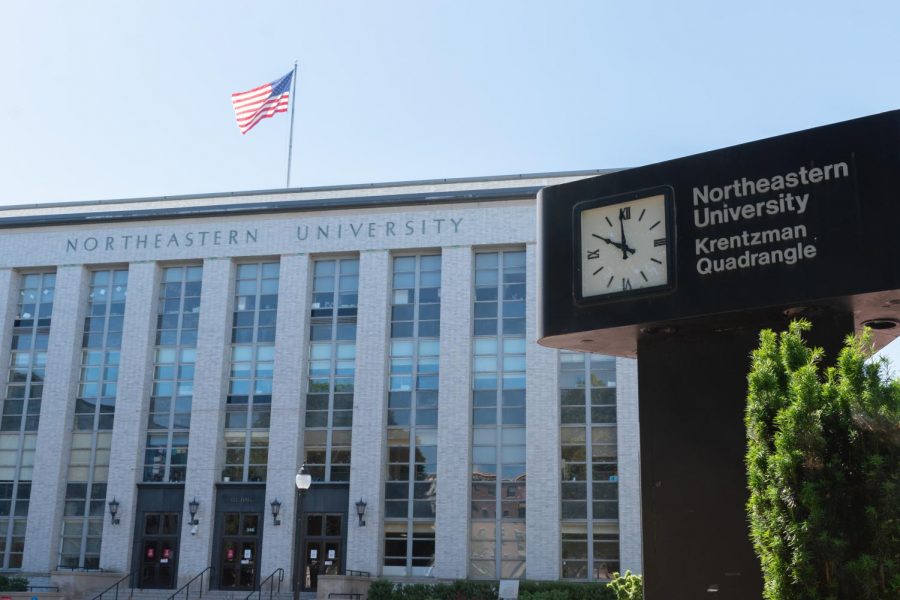Northeastern projects budget surplus despite COVID-19 shutdown, document shows
Housing refunds were “more than offset” by a decrease in operating costs
More than $23 million in housing refunds were more than offset by decreased operating costs, a financial disclosure states.
July 8, 2020
Northeastern is projected to end the fiscal year with a budget surplus despite shutting down its campus due to the COVID-19 pandemic in March, according to a financial disclosure within a bond offering prospectus. Though the university paid out millions of dollars in housing refunds, it lowered operating costs while campus was closed and is projected to finish the year with a net improvement from its planned budget, according to the statement.
“The university budgets very conservatively and always delivers results in excess of budget,” university spokesperson Shannon Nargi wrote in an email to The News.
The university issued $300 million in bonds this week, most of which will be used to build a new research facility on campus called EXP, informally referred to as ISEC II. Some of it will be used to pay off previously incurred debts. The prospectus includes financial details to give investors a picture of the university’s financial status.
According to the document, the future financial impact of the COVID-19 pandemic on the university is not yet known. It says the university paid out approximately $23.8 million in room and board refunds for the portion of the spring semester that came after the campus closed in March due to the pandemic.
But that expense is expected to be “more than offset by projected operating expense budget savings,” and the university expects a budget surplus of $28.5 million for fiscal year 2020. A fiscal year is from July 1 to June 30, with fiscal year 2020 ending June 30, 2020.
“Fortunately we were able to absorb this expense because we have a very talented finance team that budgets conservatively and ensures that we have adequate cash reserves if a crisis happens,” university spokesperson Mike Woeste told The News in an email, pointing to a “series of prudent financial steps” the university took to lower costs.
The financial disclosure referred to cost-cutting measures including a decrease in hiring, the suspension of university-sponsored travel and other discretionary spending and voluntary pay cuts by top officials including the president. Woeste wrote that there is a hold on most capital projects.
Though colleges and universities nationwide are bracing for a possible decrease in enrollment and tuition revenue, the prospectus reports that as of June 2020, Northeastern’s number of acceptances and deposits for the incoming first-year class is “higher than in prior years.” The statement also notes that “at this time, the University cannot predict with certainty the final enrollment for fall of 2020,” because students can still defer enrollment or withdraw entirely.
Northeastern’s Media Relations department declined to disclose the number of acceptances or deposits for the upcoming semester, though Nargi wrote that the university received 64,400 applications for the class, more than any fall class in the school’s history.
“The demand for a Northeastern education remains extremely high and students are eager to join the university community,” Nargi wrote to The News. “At the moment, we are confident that we will be able to enroll an academically strong and globally diverse class in the fall.”
The statement contains a detailed breakdown of the university’s finances, some of which is not otherwise publicly available due to Northeastern’s private status.
In fiscal year 2019, the statement reports Northeastern’s revenue from operations as more than $1.4 billion, including more than $998 million from tuition and fees after financial aid. The university’s operating expenses for fiscal year 2019 totaled more than $1.26 billion, meaning its net increase in assets coming from its educational operations was more than $135 million in the fiscal year.

According to the document, the increase in revenue from 2018 to 2019 was driven “primarily by continued growth in net student related revenues due to tuition rate increases, improved student retention and graduation rates, and growth in graduate professional enrollments.”
The section headed “Management’s Discussion of Recent Financial Performance” also states that total assets increased by 14 percent in fiscal year 2019 to $3.4 billion, which is primarily due “to an increase in property, plant, and equipment, positive operating performance and positive investment returns.”
$1.4 billion in total liabilities, the statement reads, brings the university’s net assets at the end of fiscal year 2019 to approximately $2 billion. Net assets are the university’s total assets minus its liabilities and debts.
The university had $636.3 million in liquid cash as of March 31, 2020, according to the statement. Liquid cash refers to cash on hand and assets that can be readily converted to cash.
The new bonds, detailed in the offering memorandum, will be repaid by the university by 2050 and carry an interest rate of 2.894 percent.
$250 million, or more than 80 percent of the new bond issuance will be spent on “capital projects,” namely the new science complex on Columbus Avenue (EXP). More than $17 million will be used to refund a portion of a previous bond issuance, $31 million will be used to repay a line of credit and almost $1.4 million is earmarked for “costs of issuance.”
The new $300 million bond issuance is not the only debt Northeastern holds, according to the statement. The university had a total indebtedness of more than $823 million as of May 1, mostly in tax-exempt bonds. After accounting for the new bonds, the university’s total indebtedness stands at approximately $1.07 billion.







